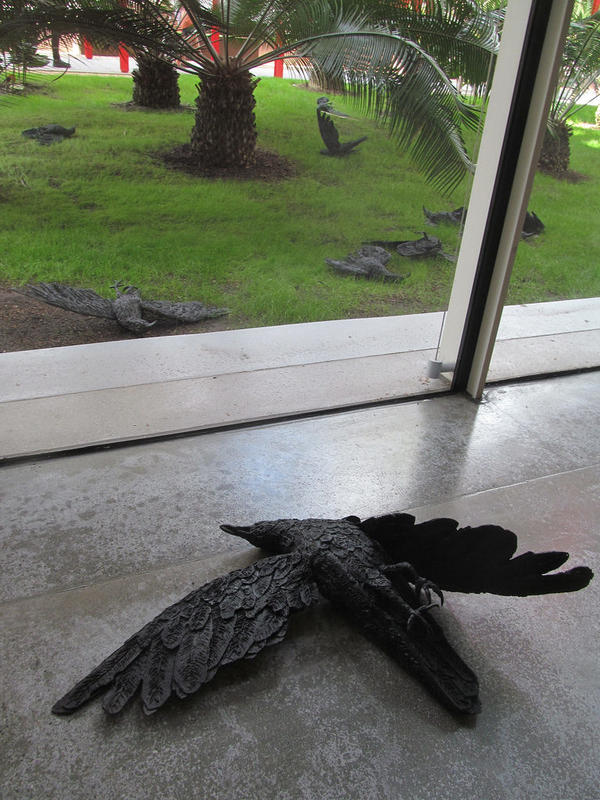More about Jersey Crows

Contributor
Environmental activism meets morbid Irish Catholicism in this work by Kiki Smith.
Kiki Smith, just like her art, is definitely a little out there, but in an endearing and quirky sort of way. Even when she plays with depressing notions of death you kind of want to give her a pass being for morbid as she reminds you of your crazy grandma.
Kiki identifies birds as the stand-ins for our soul. A little disturbing since all the birds in this work are dead? Sure, but Kiki feels that if you turn the objects of the world into characters, you allow them to live again. I am going to guess she had a lot of imaginary friends as a child, which probably softened the blow of her reality growing up. Kiki’s family and home life was a little freaky to say the least. Rather than having their name on their mailbox for example, they put a gravestone in the front yard. Naturally, the local kids assumed she was a witch. I’m sure her crazy hair and trippy tattoos have not helped her shake that reputation.
But why dead birds? Turns out that one day a flock of birds fell down dead from the sky not far from her Jersey home. Presumably the victims of pesticide poisoning, Smith felt it her duty to make an homage to the poor creatures as well as to subtly bash us for lack of environmental legislation and general evil human encroachment on the natural world. Additionally, around this same time, Smith had a vision she needed to make another Noah's ark but completely comprised of dead animals. These crows surely complied with that mission. How Kiki plans to repopulate the earth after the next time God gets pissy with us remains a mystery, but I am in full support of her creepy artistic vision.
Kiki’s world has always been filled with death. Growing up in a very morbid Irish Catholic home, her parents had eclectic tastes to say the least. Their household decor consisted of virtually no furniture, yet the walls were replete with countless odd abstract paintings. Her father also had a thing for holding onto the clothes of all their dead ancestors and collecting dentures of people who had kicked the bucket. What? Can we please just pause and think about that one for a second. Ugh.
Even after escaping her creepy parental den, morbidity seemed to follow her. In the '80s she became a central figure in the raucous East Village art scene that was soon to be decimated by the AIDS epidemic. Countless of her closest companions met death far too young. Through all this, Kiki maintains the belief that death is what allows humans the closest proximity to the wild beauty of the world. Quite possibly one of the most beautiful sentiments about death I've heard. I would say this sculpture brings that point home.
Sources
- Jones, Joyce. "KIKI SMITH'S CREATURE FEATURE." The Washington Post. March 27, 1998. Accessed May 24, 2017. https://www.washingtonpost.com/archive/lifestyle/1998/03/27/kiki-smiths…
- Kimmelman, Michael. "The Intuitionist." The New York Times. November 04, 2006. Accessed May 24, 2017. http://www.nytimes.com/2006/11/05/magazine/05kiki.html?mcubz=2.
- “Stories.” Art21. September 9, 2013. Accessed May 24, 2017. https://art21.org/watch/art-in-the-twenty-first-century/s2/kiki-smith-i….
- Sydell, Laura. "Artist Kiki Smith: A Profile." NPR. October 09, 2006. Accessed May 24, 2017. http://www.npr.org/templates/story/story.php?storyId=6225036.











